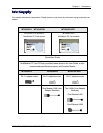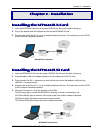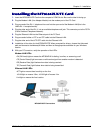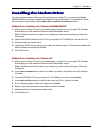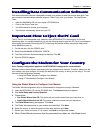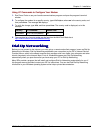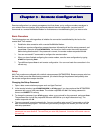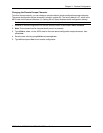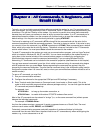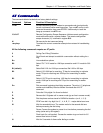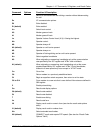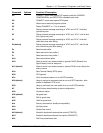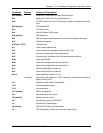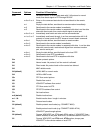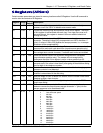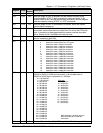
Chapter 4 – AT Commands, S-Registers, and Result Codes
MT5634ZLX, MT5634ZLXI, MT5634ZLX/FE User Guide 15
Chapter 4 – AT Commands, S-Registers, and
Chapter 4 – AT Commands, S-Registers, andChapter 4 – AT Commands, S-Registers, and
Chapter 4 – AT Commands, S-Registers, and
Result Codes
Result CodesResult Codes
Result Codes
Typically, your fax and data communications software controls the modem for you. For complete control
over your modem, you may also want to use AT commands. Each AT command must be preceded by the
characters AT to get the ATtention of the modem. You need to be careful when using these commands
because they can cause your software to lose its ability to control the modem. If an AT command you’ve
entered has caused a problem, turn the computer off and then back on to reset the modem to factory
default settings. You may also reset the factory defaults by typing AT&F&WZ.
The format for entering an AT command is ATXn, where X is the command and n is the value for the
command, sometimes called the command parameter. The value is always a number. If the value is zero,
you can omit it from the command; (e.g. AT&W is equivalent to AT&W0). Most commands have a default
value, which is the value that is set at the factory. The default values are included in the AT Commands
section which follows. You must press Enter to send the command to the modem.
To send AT commands to the modem you must use a communications program, such as HyperTerminal,
which is included in Windows 95, 98, NT and 2000. You can issue commands to the modem directly by
typing them in the terminal window of the communications program or indirectly by configuring the
communications program to send the command automatically. If you are using Windows Dial-Up
Networking, AT commands can be included in the connection properties (described later in this chapter).
You can issue several commands in one line; this is called a command string. A command string begins
with AT and ends when you press Enter. Spaces separating the commands are optional; they are
ignored by the command interpreter. The most familiar command string is the initialization string (used to
configure the modem when it is turned off, reset, or when your communications software initiates a call to
another modem).
To use an AT command, you must first:
1. Run your communication software.
2. Configure the software for the appropriate COM port and IRQ settings, if necessary.
3. Enter Terminal mode (also known as Command mode, Local mode, or Direct mode). This is the
mode in which most data communications software packages start up. You can then type the desired
AT command and press the Enter key.
For example, type:
ATH0<Enter> to hang up the modem connection, or
AT&K3<Enter> to enable bi-directional CTS/RTS hardware flow control.
Most of the AT commands can be entered in “strings” (i.e., on the same command line) without spaces
between the individual commands.
For example: AT&K3H0<Enter>
Any time the modem receives a command, it sends a response known as a Result Code. The most
common result codes are OK, ERROR, and CONNECT.
Fortunately, communication programs make daily operation of modems effortless by hiding the
commands from the user. Most users, therefore need to use AT commands only when reconfiguring the
modem, e.g., to turn autoanswer on or off.



